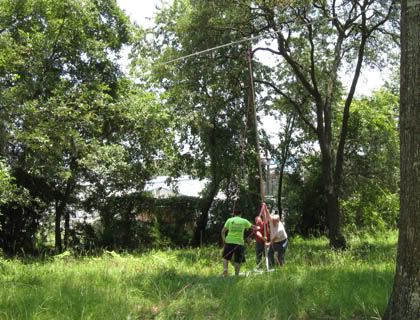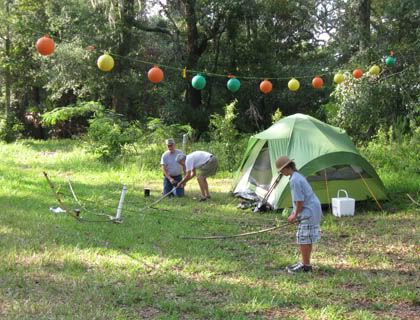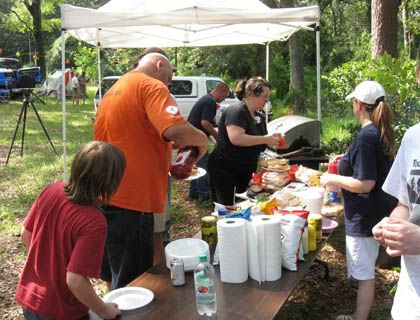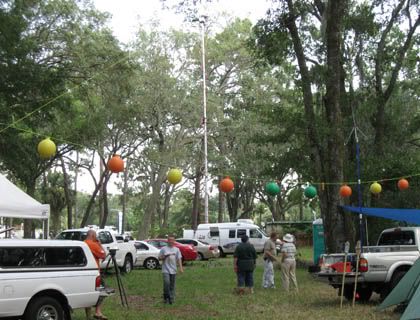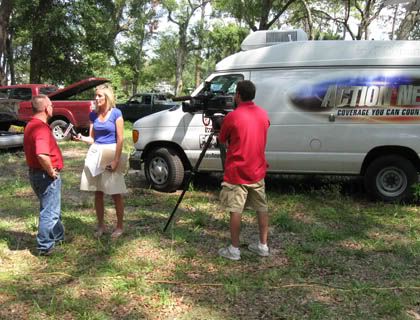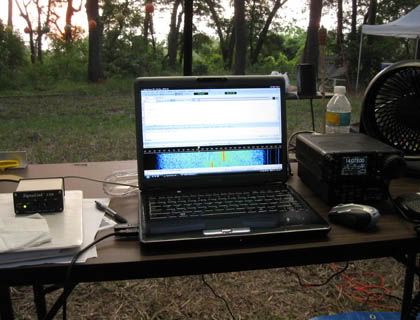I finished the HF NVIS antenna last week and used it to check in to the North Florida Phone Net on 3950. My friend Bill was running the net that night and the first thing he did was tell me how good my signal was. I was very happy to hear that. Here's a little rundown of how I put the antenna together. The design is based on the AS-2259 military antenna and can be found
here.
The 15' mast is made of 3 5' pieces of 1.5" schedule 40 PVC. I used an end cap for the antenna connection. The hardware is brass for conductivity. Here's the cap before assembly.

Holes are drilled. The S0-239 needs a 7/8" hole. The other holes are sized for #6 screws.

The original plans called for the head to be cut off a #6 screw with the end inserted into the center conductor of the SO-239. I don't see how this is possible as there's no way I see it fitting. I scaled down to a #4 and it fit fine. Here is the assembled cap.

I used a 2' piece of 3/4" rebar to stabilize the mast bottom and keep it from kicking out. Here it is with the bottom section in place and the other two on the ground. I originally started with #18 stranded copper wire but it proved to be horrendous to work with. It knotted, kinked, and twisted to the point of being unusable, at least for this project. I have since switched to #14 insulated stranded which seems to be working much better. Each side of the antenna has two wire runs of 38' and 25'. These terminate at dogbone insulators but you could just as easily use some PVC if you have it laying around.

My feedline is RG-8X and it enters the bottom of the mast through a 3/4" hole and travels up to the SO-239 in the cap.

There was (imho) a design flaw that presented itself early on as I started to raise the mast. The PVC couplers used to join the mast sections didn't provide nearly enough support or rigidity. As the mast went up is leaned and swayed every which way until the top section finally fell off. I panicked since it was the holiday weekend but I managed to slip into Ace Hardware before the closed. I switched to threaded couplers and they provide a great deal more support. Keep in mind that nothing is permanently attached. I didn't glue any of the parts together. I may in the future but for the moment things seem to be fine without it.

After the first night on the air what I thought to be another major design flaw proved to be true. I awoke to find the antenna leaning severely and thought that the stakes holding the legs out had come loose. Instead I found that the center conductor and screw had broken off. I never really understood the logic behind putting so much stress on the connector. I came up with my own design mod and it seems to be better and stronger. I drilled a hold in the side of the cap where I ran a 1" #6 brass machine screw. I then used about a 4" piece of #12 solid wire that I soldered between the center conductor (using a new connector) and the new screw. Now the heavier screw can take the stress without straining the connector itself.

This is what the latest mod looks like with the legs attached.

You may have noticed that I also decided to paint the mast so it blends in better than the stark white PVC. I used Krylon's Fusion Camo paint. It's supposed to bond to plastic without primer but it seems to scratch off the PVC very easily. Time will tell how well it really holds up.
Here is the finished antenna after the mods and paint job.

And finally the cap and legs.

It's been a fun project. My next goal is to model the antenna. Stay tuned for that.













